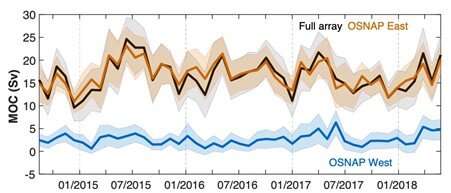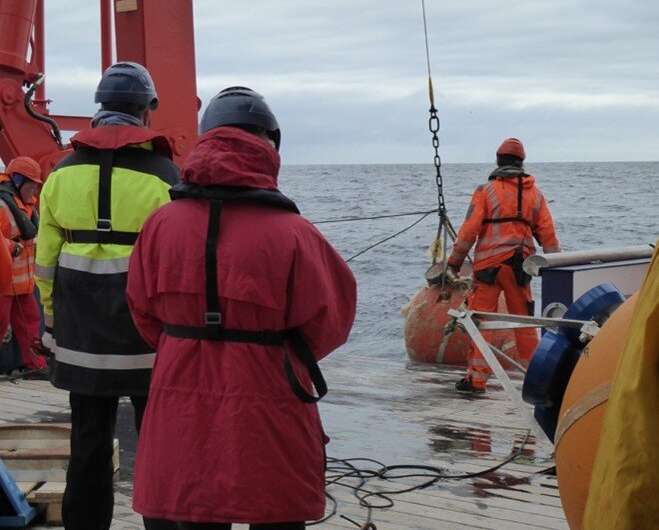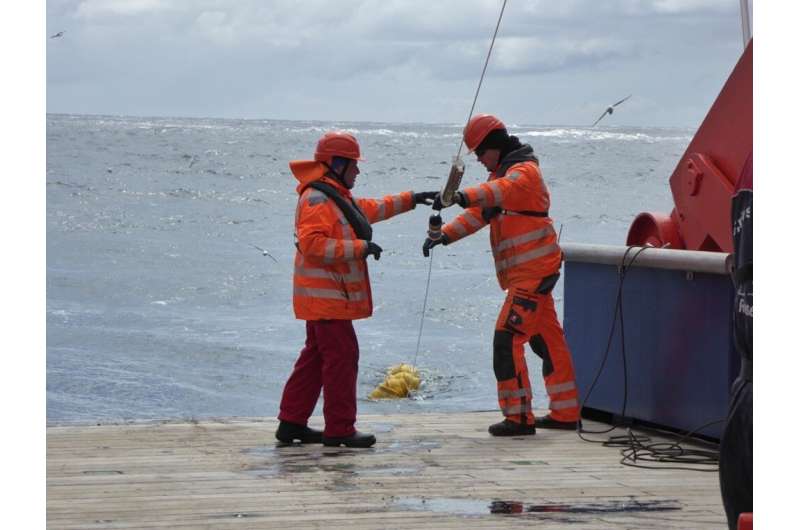North Atlantic currents may not be linked to Meridional Overturning Circulation

A brand new worldwide examine has solid doubts on the view that variations within the density of among the deepest currents of the subpolar North Atlantic Ocean are attributable to winter floor situations and symbolize modifications within the power of the Meridional Overturning Circulation (MOC).
The examine included the efforts of 15 analysis institutes and was led by Dr. Feili Li and Professor Susan Lozier from Georgia Institute of Expertise, in partnership withProfessor Penny Holliday, from the Nationwide Oceanography Heart (NOC). Analysis revealed on 24 Might 2021 in Nature Communications reveals observations remodeled 4 years from 2014 within the subpolar North Atlantic reveal no signal of sturdy winter cooling on the floor of the ocean on the density of the deepest boundary currents discovered within the western areas of ocean basins. Surprisingly, the authors additionally discovered no seen relationship between modifications in these deep western boundary currents and variations within the power of the MOC.
Information of the bodily processes that govern modifications within the MOC are important for correct local weather projections. The MOC brings huge quantities of warmth and salt into the northern Atlantic by way of the Gulf Stream and North Atlantic Present. Modifications within the power of the MOC straight have an effect on sea degree, local weather and climate for Europe, North America and components of the African continent. Local weather projections all predict a slowing of the MOC on account of greenhouse fuel emissions, with doubtlessly damaging affect on coastal communities and land.

Earlier evaluation of fashions has led scientists to assume that modifications within the power of the MOC are related to modifications within the density of the deep western boundary currents which make up nearly all of the southward return circulate of the MOC loop. In fashions, density may be strongly affected by a winter course of known as deep convection or deep water formation, the place chilly winds cool the floor water inflicting it to turn out to be very dense and sink to nice depths (greater than 2km). The connection in fashions between convection, modifications in deep western boundary currents and the power of the MOC additionally underpins proof from palaeoclimate proxies for intervals of diminished MOC and low European temperatures.

In 2014 scientific tools was positioned within the subpolar North Atlantic (OSNAP) to look at these processes in actual life. The stunning new outcomes will stimulate a reconsideration of the view that deep western boundary modifications symbolize overturning traits, with implications for future local weather projections in addition to the interpretation of previous local weather change.
Prof. Susan Lozier, total lead of the worldwide OSNAP program mentioned: “It’s gratifying to see what a global neighborhood of oceanographers can obtain with a concentrated effort of collaboration and dedication. Packages similar to OSNAP and RAPID are blueprints for a way oceanographers throughout the globe can collectively examine the ocean’s function in local weather change within the years and many years forward.”
Prof. Penny Holliday, Affiliate Head of Marine Physics and Ocean Local weather from the Nationwide Oceanography Heart commented: “it’s extremely thrilling to see how new observations from the OSNAP array are accelerating our data of how these main ocean currents work, in order that we may be extra assured in our understanding of previous local weather change and in future local weather projections.”
Research pinpoints key causes of ocean circulation change
F. Li et al, Subpolar North Atlantic western boundary density anomalies and the Meridional Overturning Circulation, Nature Communications (2021). DOI: 10.1038/s41467-021-23350-2
Nationwide Oceanography Centre, Southampton
Quotation:
North Atlantic currents is probably not linked to Meridional Overturning Circulation (2021, June 11)
retrieved 13 June 2021
from https://ift.tt/3vk4rZl
This doc is topic to copyright. Aside from any honest dealing for the aim of personal examine or analysis, no
half could also be reproduced with out the written permission. The content material is offered for data functions solely.
from WordPress https://ift.tt/3vok4yB
via IFTTT
Nhận xét
Đăng nhận xét